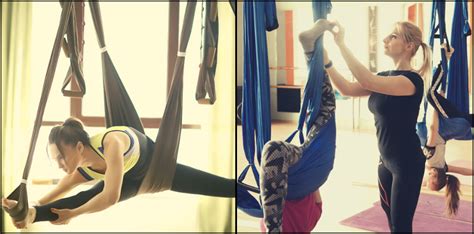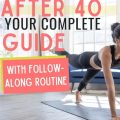Home or Studio: Deciding the Best Place to Begin Your Yoga Journey
Yoga beginners often face a critical question: Should they start practicing at home or in a studio? Both settings offer distinct benefits and challenges, making this decision highly dependent on individual goals, preferences, and lifestyles. This article provides an in-depth exploration of each option, guiding readers to find the most effective approach for their unique circumstances.
Introduction
The growing popularity of yoga has led to diverse ways of accessing classes and programs. Some people prefer the comfort and convenience of home practice, while others thrive in structured, studio environments. The rise of online platforms complicates this decision, presenting both exciting opportunities and challenges.
This article evaluates the pros and cons of starting yoga at home versus in a studio from multiple angles: accessibility, structure, social dynamics, costs, and long-term outcomes. Whether your focus is convenience, affordability, personal growth, or mastering advanced techniques, this guide will help you make an informed decision.
Key Concepts
- Guided vs. Self-Directed Learning: Studio classes typically involve instructor-led guidance, while home practice requires self-discipline and planning.
- Consistency and Commitment: The setting can significantly impact the consistency of your yoga practice.
- Individual vs. Community Experience: Studio environments foster a sense of community, while home practice offers introspection and solitude.
- Customization and Adaptability: Home practices are highly adaptable to personal schedules, but studio classes offer expert modifications and corrections.
Historical Context
Yoga’s roots go back thousands of years to ancient India, where it was traditionally practiced in ashrams or temple settings under the guidance of gurus. With the globalization of yoga, the practice has shifted from these communal, spiritual environments to urban studios and individual homes. Modern studio yoga emphasizes physical postures and wellness, often integrating contemporary elements like music and props.
The shift towards home-based yoga began gaining momentum with the advent of instructional videos in the 1980s. In recent years, the surge in online classes has further blurred the line between home and studio practices, making both accessible in unprecedented ways.
Current State Analysis
The modern yoga landscape offers unparalleled flexibility in choosing where and how to practice. Factors like post-pandemic lifestyle changes and technological advancements have fueled the growth of remote yoga options. However, studio classes continue to attract students seeking professional instruction and community support.
| Factor | Home Practice | Studio Practice |
|---|---|---|
| Accessibility | Available anytime; requires minimal equipment | Limited to class schedules and travel time |
| Cost | Lower, often free via online platforms | Higher, due to class fees or memberships |
| Instructor Feedback | Limited unless using live online classes | Immediate feedback and personalized corrections |
| Motivation | Requires self-discipline | Encouraged by group dynamics |
| Customization | Highly flexible to personal preferences | Pre-set class formats with some modifications |
Practical Applications
To decide whether to begin yoga at home or in a studio, it’s essential to align your choice with your lifestyle and goals. Below are some practical tips for each setting:
- Home Yoga: Start with free online beginner classes; set aside a dedicated space for practice; use props like yoga blocks to enhance flexibility.
- Studio Yoga: Attend introductory classes to get a feel for different styles; invest in a quality yoga mat; interact with instructors to improve your technique.
Case Studies
Let’s look at a few real-life scenarios to illustrate the outcomes of starting yoga in different environments.
| Scenario | Approach | Outcome |
|---|---|---|
| Busy Professional | Started with 15-minute home routines | Improved flexibility but lacked motivation after a few months |
| Social Enthusiast | Joined a local yoga studio | Developed a consistent practice and made new friends |
| Post-Surgery Recovery | Practiced yoga at home with online physiotherapy guidance | Regained mobility at a personalized pace |
Stakeholder Analysis
The choice between home and studio yoga affects multiple stakeholders:
- Practitioners: Need accessible, effective ways to achieve their fitness or mindfulness goals.
- Studio Owners: Face competition from online platforms and changing consumer behavior.
- Instructors: Must adapt to hybrid teaching models (in-person and online).
- Online Platforms: Seek to innovate with interactive features and personalized content.
Implementation Guidelines
Consider the following strategies when implementing a new yoga routine:
- For Home Practice: Set realistic goals, such as practicing three times a week; track progress with a journal or app.
- For Studio Practice: Attend different styles (like Vinyasa, Hatha) to find what resonates best; make a habit of attending classes regularly.
Ethical Considerations
Both home and studio yoga have ethical implications. Studios must prioritize inclusivity, ensuring that classes cater to individuals of all abilities and backgrounds. On the other hand, online platforms should safeguard data privacy and promote responsible advertising, particularly for health-related content.
Limitations and Future Research
This comparison has some limitations, such as the variability in personal preferences and access to resources. Future research could explore the psychological impact of hybrid yoga models (combining home and studio practice) and the effectiveness of virtual reality-based yoga. Additionally, studies can investigate the long-term outcomes of yoga on mental health across different demographics.
Expert Commentary
Experts agree that both home and studio yoga have unique advantages, and the best choice depends on individual goals. The accessibility of home practice fosters consistency, while studio classes offer community engagement and professional guidance. A blended approach—practicing at home with occasional studio sessions—may provide the best of both worlds.






